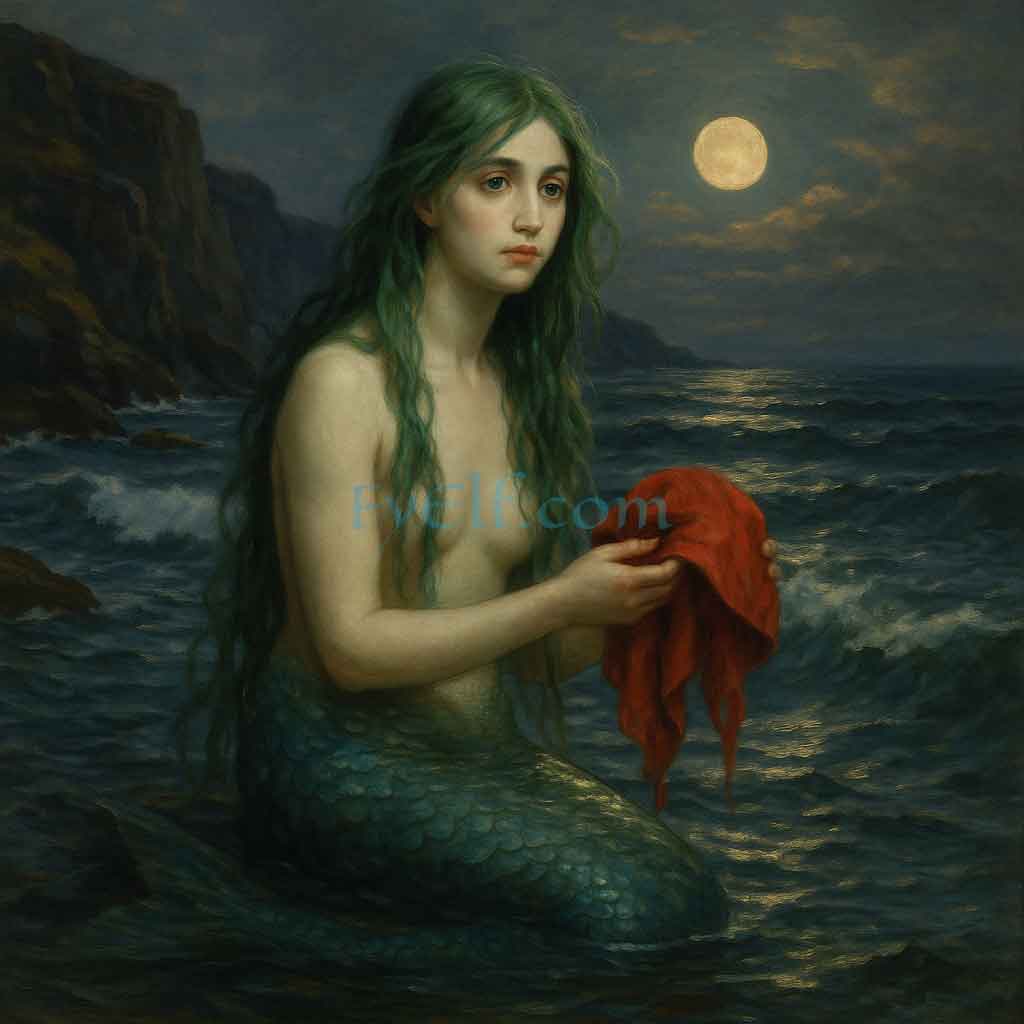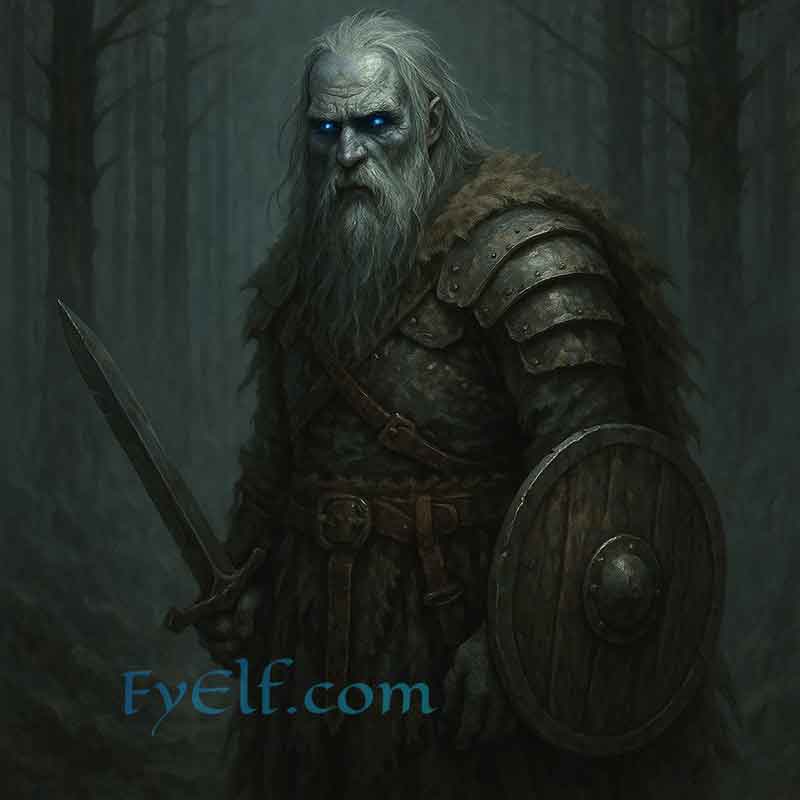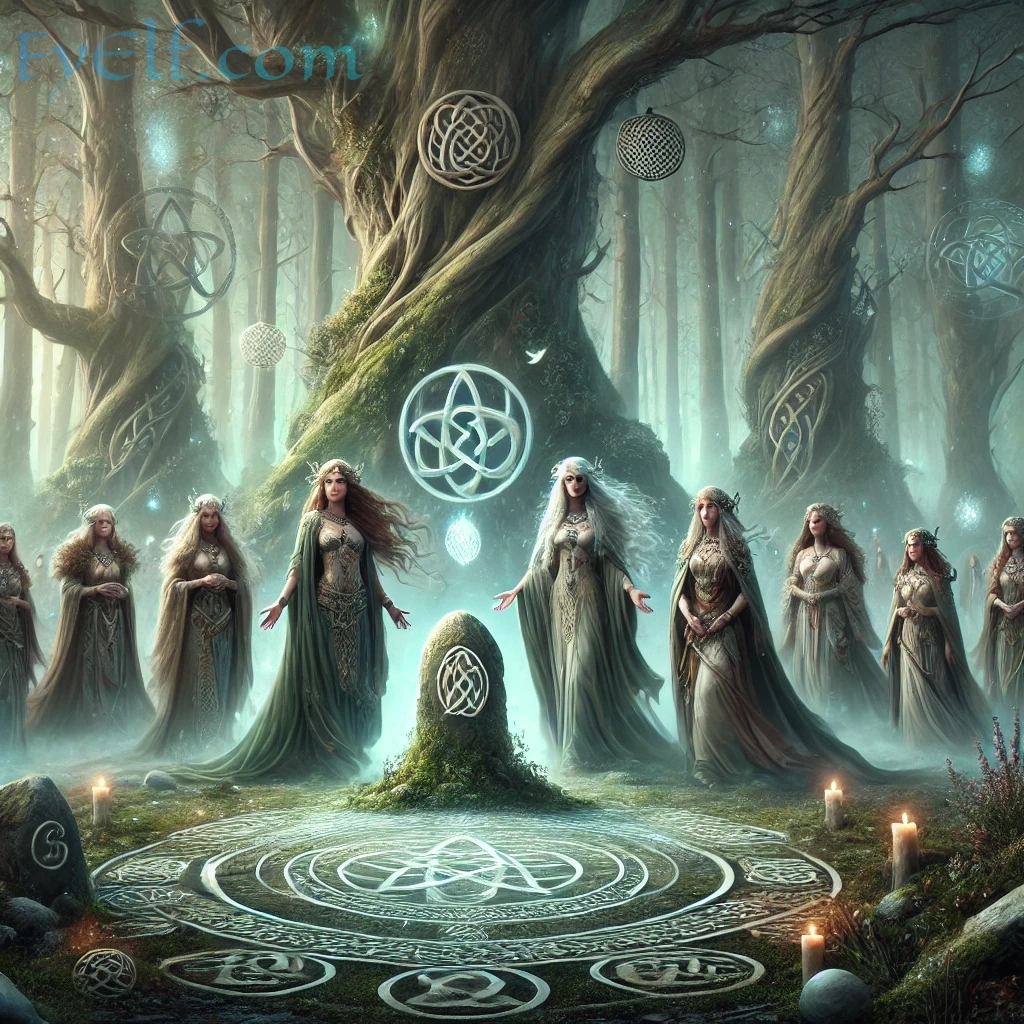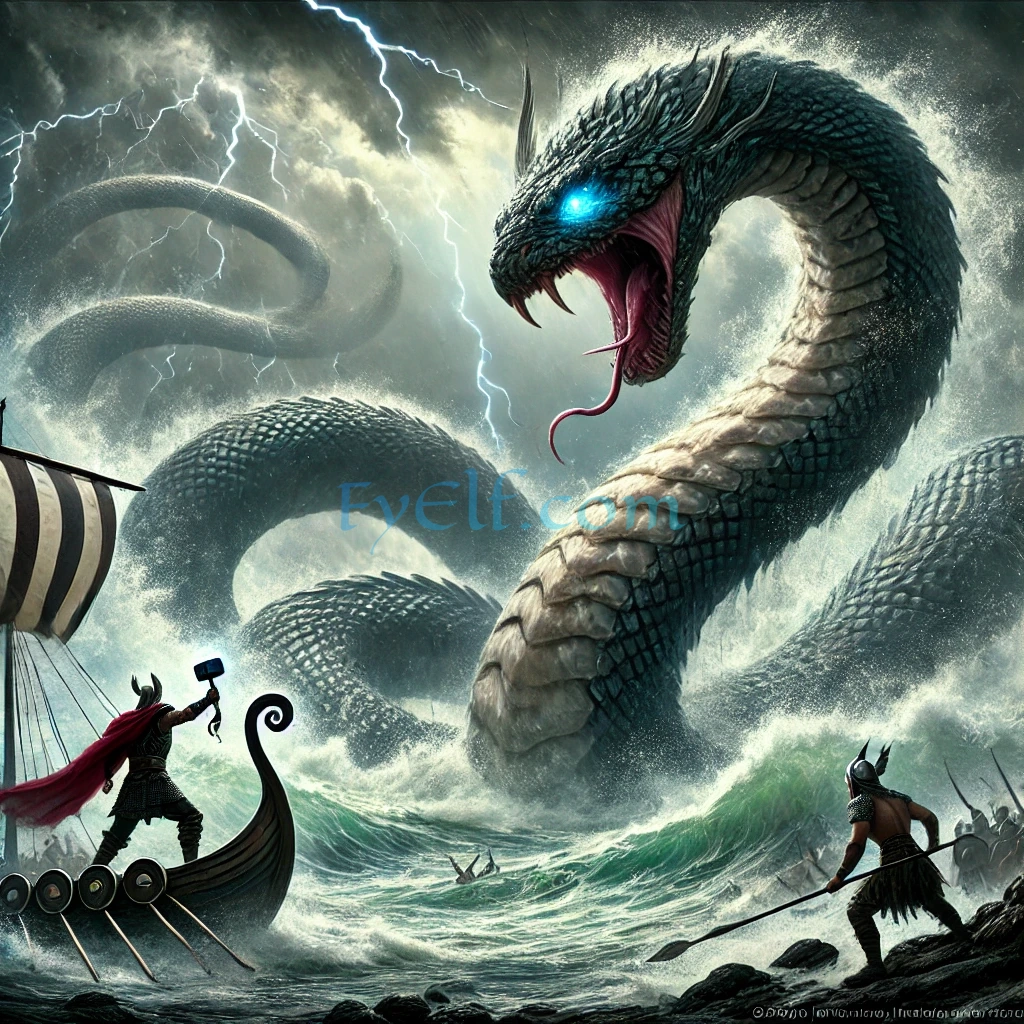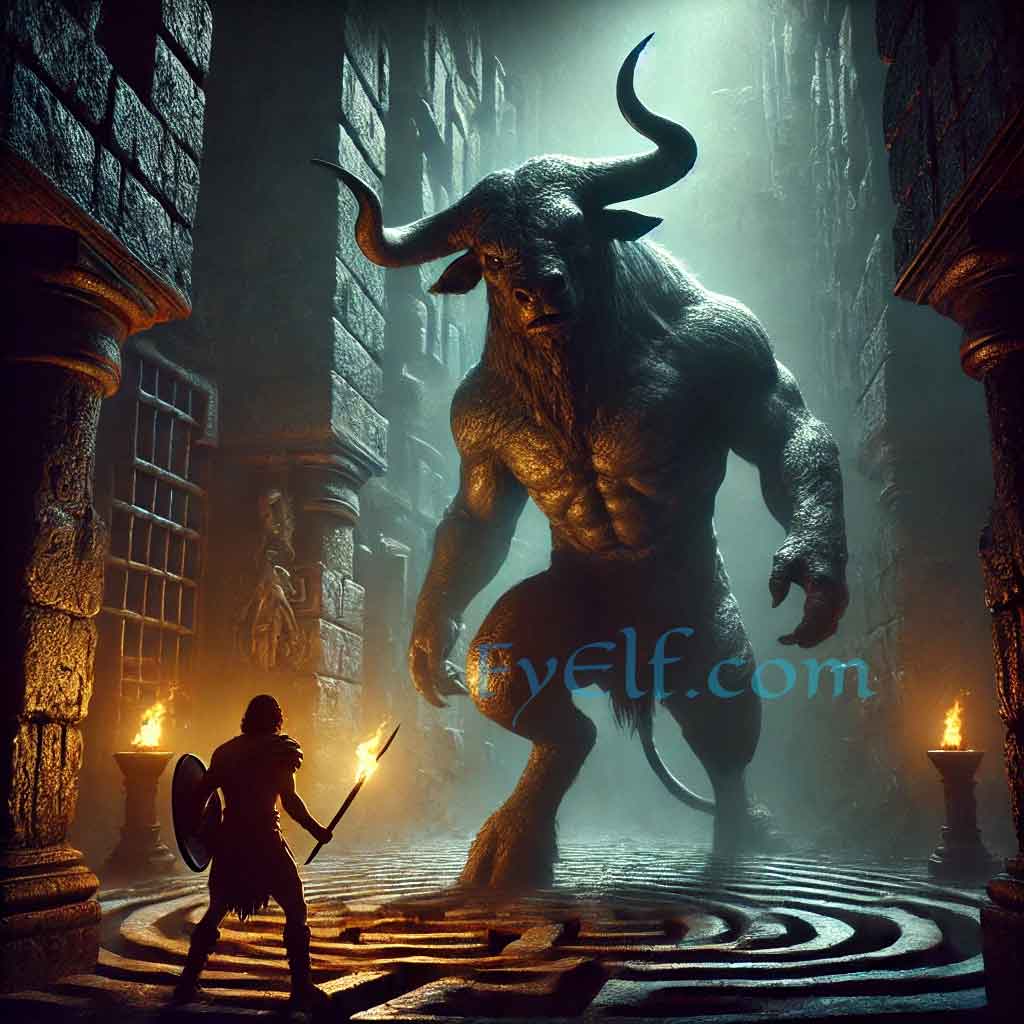The stormy Atlantic coast of Ireland has given birth to countless legends of strange beings that blur the line between land and sea. Among the most enchanting are the Merrows—mythical mermaids and mermen of Irish folklore. Known for their beauty, mystery, and tragic love stories, merrows hold a unique place in the world of Celtic mythical creatures.
Who Are the Merrows? Mermaids and Mermen in Irish Folklore
In Irish tradition, merrows are sea-dwelling beings who resemble humans but with distinct features that reveal their supernatural nature. The word merrow comes from the Irish murúch (sea maiden).
- Female merrows are usually described as strikingly beautiful, with green hair, pale skin, and the ability to charm humans.
- Male merrows, in contrast, are portrayed as less attractive—ugly, brutish, and sometimes hostile.
What makes merrows especially unique in mythology is their connection to magical garments and their dual role as both enchanting and dangerous.
Origins of the Merrow Myth in Celtic and Irish Tradition
The merrow myth likely developed as part of the Celtic reverence for the sea, combined with influences from classical mermaid tales and possibly even Norse legends.
In Ireland, the sea was both a source of life and a symbol of danger. Fishermen’s families, living with constant uncertainty, used tales of merrows to explain:
- Unexplained drownings or disappearances.
- Strange encounters with strangers from the sea.
- The tension between love for the land and the eternal pull of the ocean.
These stories blended Celtic symbolic thinking with real coastal experiences, embedding merrows deeply into folklore.
The Appearance of Merrows: Green Hair, Red Caps, and the Sea
Merrows are not identical to classical mermaids. Irish folklore gives them distinct features:
- Green hair flowing like seaweed.
- Webbed fingers and sometimes scaly legs.
- Red cap or cloak (cohuleen druith) that grants them the power to dive beneath the waves.
Without this magical cap, a merrow could not return to the sea. This detail creates a parallel to the selkie’s seal skin, highlighting the recurring Celtic theme of magical garments as symbols of identity and freedom.
Tales of Love and Loss: Human Marriages with Merrows
Some of the most famous merrow stories involve romances with humans.
- In many tales, a fisherman finds a merrow’s red cap, hides it, and convinces her to become his wife. They may live happily for years and even raise children.
- However, if the merrow ever finds her cap again, she cannot resist the call of the sea and leaves her human family behind forever.
These stories echo themes found in selkie legends—love, captivity, and the inevitability of loss when one belongs to two worlds.
Merrows vs. Selkies and Mermaids: What Makes Them Unique?
At first glance, merrows resemble other sea myths. But there are important differences:
- Mermaids (classical tradition): Half-human, half-fish beings often associated with danger and seduction.
- Selkies (Scottish tradition): Seal-people who shed skins to walk on land.
- Merrows (Irish tradition): Sea beings with magical caps, human-like but marked with aquatic traits, blending beauty and tragedy.
Thus, merrows are not simply “Irish mermaids.” They are a distinctly Celtic creation, carrying the cultural symbols of Ireland’s relationship with the sea.
Symbolism of Merrows in Celtic Mythology
The merrow myth carries deep symbolic weight:
- The red cap represents freedom and identity—control over one’s destiny.
- Duality of love and loss reflects human relationships shaped by longing, absence, and fate.
- The sea itself is central: vast, dangerous, yet alluring, a force humans can never master.
Through merrows, Irish folklore expressed both the allure of the ocean and the pain it often caused coastal families.
Merrows in Irish Legends and Storytelling Traditions
Merrows appear in both oral folklore and written tales collected during the 18th and 19th centuries. Writers like Thomas Crofton Croker preserved stories of merrows in works such as Fairy Legends and Traditions of the South of Ireland (1825).
Some local legends describe families who claimed descent from merrows, linking coastal communities to these mythical sea-beings. The idea of “merrow blood” explained unusual beauty, artistic talent, or longing for the sea.
Modern Depictions of Merrows in Culture and Literature
Merrows continue to inspire modern writers, musicians, and filmmakers. They appear in:
- Irish fairy tale collections, retold for children and adults.
- Fantasy literature, where merrows are often depicted as mysterious allies or antagonists.
- Popular culture, including role-playing games and modern folklore adaptations.
Unlike generic mermaids, merrows are gaining recognition as a distinctly Irish mythical creature, adding depth to global mermaid traditions.
Why Merrow Stories Still Fascinate Today
Merrows endure in folklore because they touch universal themes:
- The pull between two worlds—land and sea, freedom and family.
- The idea of love that cannot last, echoing human experiences of loss.
- The mystery of the ocean, which continues to inspire imagination.
In the modern age, merrows remind us of Ireland’s deep relationship with the sea and the power of Celtic mythology to express timeless truths.
Conclusion
The merrows of Irish folklore are far more than simple mermaids. They are richly symbolic beings, part of the Celtic mythical creatures tradition, shaped by Ireland’s history, geography, and imagination. Beautiful yet tragic, bound to both sea and shore, merrows remain an unforgettable part of Irish mythology—creatures who still enchant us today.
